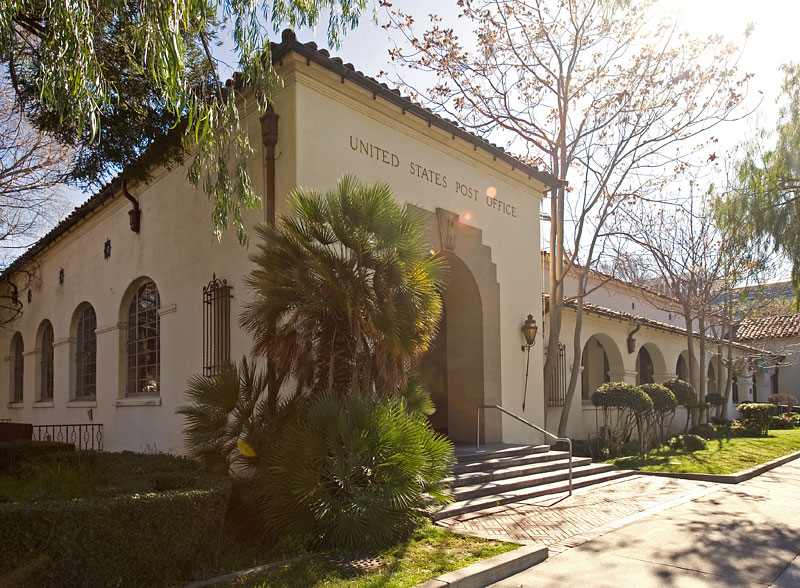This weekend I stopped in to the downtown Palo Alto post office, which is a lovely Mission / Spanish Revival building from the 1920s. (see note on history below).
I had the idea of requesting a PO Box there, as it would be useful to have this as an address and it would be enjoyable to stop in to this building regularly. However, I have learned that the USPS has just announced plans to sell the building and relocate this year. The article notes that a nearby 4-story building recently sold for “an astounding $64 million, or $900 per square foot.”
The New York Times recently had a fascinating story about Deutsch Post, a now ultra-efficient and thriving global competitor born out of the former German post office (Deutsch Bundespost): “Reinventing Post Offices in a Digital World.” DP and its bright-yellow identity is known to Americans via its global package-delivery arm, DHL.
Deutsche Post has sold off all but 2-3 off the once 29,000+ buildings it owned, and usually operates inside other business such as banks or groceries, or in some villages, out of the homes of franchisees.

Deutsche Post branch/store, and kiosk, Berlin
The contrast with the hidebound, collapsing US Postal Service is obvious. Clearly, something like what Deutsche Post has done is, economically, the way to go, to maintain the USPS; but the case of the Palo Alto landmark which I won’t in future get to visit regularly — with all the sense of civic uplift it might help inculcate — shows what may be lost when public buildings are sold off. All over the country, civic landmarks are being and will be sold off, many never to be stepped foot in by the public again.
History / architecture note
The Palo Alto post office was designed by a significant local architect, Birge M. Clark, whose father Arthur Clark was also an architect, Stanford Professor and mayor of Mayfield (Mayfield is the town that was absorbed into Palo Alto in the 1920s, whose old main street and train stop are the California Ave and Caltrain stop of today, near Hotel California).
A longtime friend of Herbert Hoover, Arthur Clark constructed the future U.S. president’s home in 1919 with assistance from young Birge.


You make a good point. It is a lovely building. I love going to the post office, nostalgia & stamps.